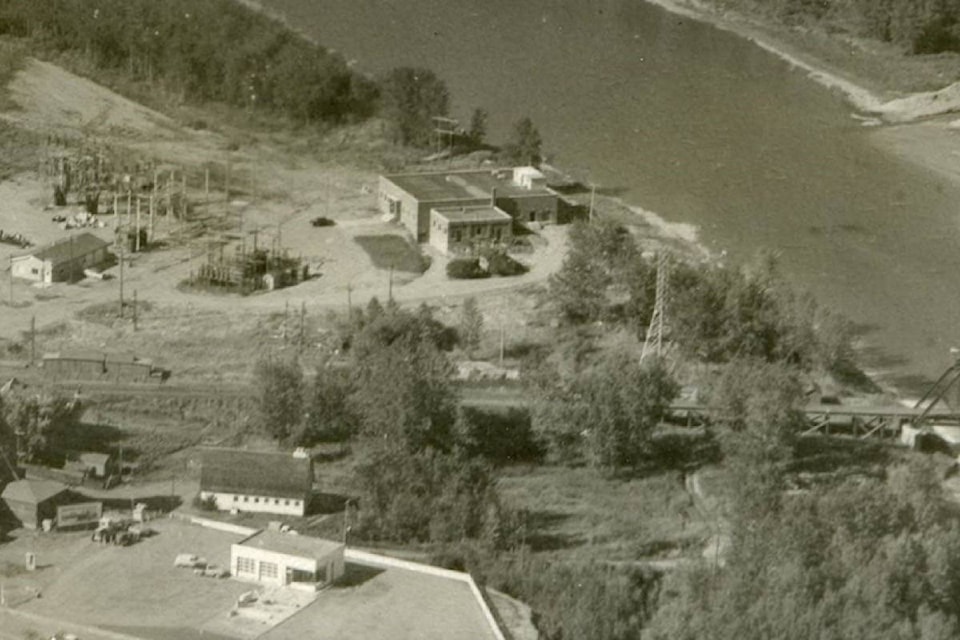The oldest part of the Red Deer water treatment plant on 54th Avenue is being demolished.
The demolition of the old brick buildings, on the east end of the complex, is taking place to make room for the $23-million particulates treatment plant.
This project is the final stage of a $90-million multi-year upgrade to Red Deer’s water treatment facilities.
This initiative, first approved in 2008, is anticipated to meet regional water needs until 2031.
In Red Deer’s earliest days, water came from a number of shallow wells. Because of frequent contamination from surface run-offs, outdoor pit toilets, and animal manure from all of the horses used for transportation, typhoid fever was a significant problem in the community.
In the summer of 1904, the Western General Electric Power Company built a power plant west of the old CPR rail bridge.
In October 1904, Red Deer began the installation of a waterworks system. Pumps were installed at the powerhouse. Water was then pumped from the river into the new distribution mains. There was little water treatment, other than the installation of screens to take out river debris.
Red Deer was now beginning to grow rapidly. In August 1906, a much larger powerhouse was constructed. New, more powerful waterworks pumps were also installed to improve the transfer of water from the river into the mains.
In April 1926, the City of Red Deer bought out the Western General Electric Company and took over the operation of the power plant.
The old steam power plant was phased out in 1928, with the signing of a long-term contract with Calgary Power to purchase hydro-electric power. However, no upgrade was made to the waterworks pumps and system.
That changed with the creation of the Red Deer Health Unit in 1931. This health-promotion and disease-prevention agency put pressure on the City of Red Deer to do something significant about the ongoing problems with typhoid and other related illnesses.
Consequently, in March 1933, a chlorinator was installed in the pump house to improve the safety of the city’s water supply. At the same time, a heater was installed to offset the problems with water flow in the wintertime.
Meanwhile, a concrete water reservoir/cistern, with another small pumping station, was installed on the northern brow of Michener Hill (next to the intersection of what is now 52nd Street and 40th Avenue).
This helped to alleviate some of the problems with water pressure on the East Hill.
In January 1939, what was left of the old power plant was demolished, but the pump house remained. A water filtration plant was then constructed on the site to clarify, filter and chlorinate the water pumped into the city’s distribution mains.
It was to have a capacity of 700,000 gallons per day. The new plant went into operation in February 1940.
In the early 1950s, Red Deer began to grow very rapidly again. The city had trouble keeping an adequate water supply.
Water meters were installed in 1950 and 1951 to reduce demand. However, it was obvious more long-term solutions were needed.
In 1955, a new water treatment plant was constructed, with a capacity of 3.6 million gallons per day, which, when combined with the 1939 plant, gave a total water treatment capacity of 4.3 million gallons per day.
The Michener Hill reservoir was phased out after the construction of the new green water tower (Horton water spheroid) in Mountview in 1958-59. A new clarifier was added to the water treatment plant in the 1970s.
In 1983, Water Treatment Plant No. 2 was constructed to the west of the 1955 structure. The Bellevue Reservoir was constructed to the south of Water Treatment Plant No. 1 in 1995.
As already mentioned, a number of significant expansions and improvements to Red Deer’s water treatment facilities have taken place over recent years as the city’s population has jumped to more than 100,000.
The water treatment plant complex now has a capacity of 120 million litres per day.
More importantly, in contrast to the community’s earliest days, Red Deer residents can count on a reliable and safe water supply.
Red Deer historian Michael Dawe’s column appears Wednesdays.
